

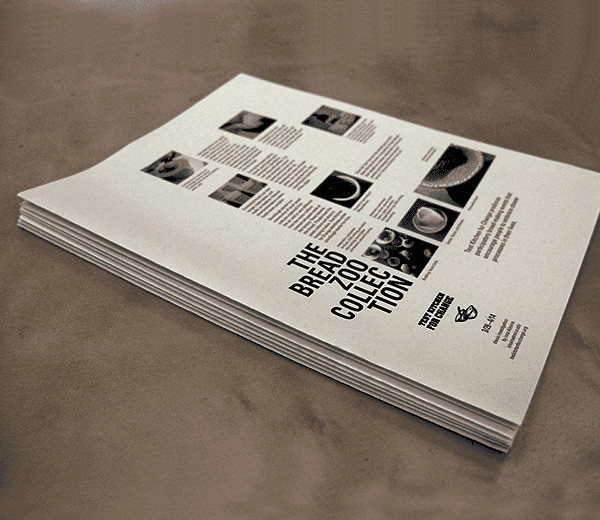
“Exhibition map” helped the visitors to interpret elements of the “Bread Zoo” collection. Different maps were produced for different bread events.

Meeting people at the events and teaching them about bread taught me that people are very eager to learn and try new things. Being a designer, I jumped at the opportunity to curate and design a collection of objects to explore at the event. I collected, borrowed, and made containers and tools in order to educate people about bread, yeast, malt, wheat sprouting, and wild foods.
I named my collection the Bread Zoo; the objects, along with books, videos and jars of sprouted grains, comprised a small bread museum. People spent time looking at the specimens during the events.
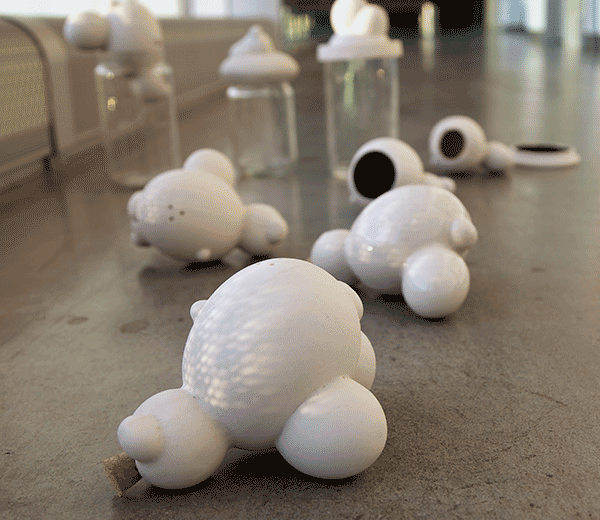
Containers for spices
and sourdough starter culture inspired by
the shape of budding
yeast cells.
materials + processes | ArtCam, CNC milling, porcelain slip casting, found glass containers, wheel throwing
Budding Yeast Molecules
Containers for spices and sourdough starter culture inspired by the shape of budding yeast molecules.
Fermented foods can last longer, taste better, and make us healthier. Natural slow fermentation makes foods more complex.
Sourdough starter is a community of local yeast cultures captured from the air and is different from the mono-culture, commercial, factory-made yeast. Yeast leavens the bread. People feed the yeast culture and share it, keeping it alive. Test Kitchen for Change distributes active sourdough starter for free.
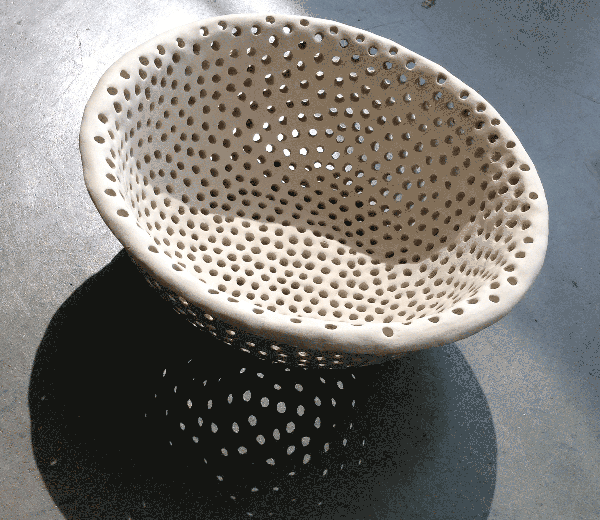
materials + processes | hand-built porcelain
Permeable Bowl
Permeable Bowl was inspired by and made with a mixing bowl as a basic shape. It is perforated with holes and water will spill from it, yet dough will proof (rise) in this container.
To make bread at home, you need an oven and a mixing bowl, everything else can be improvised from what you already have. Mixing bowl proved to be a central component.
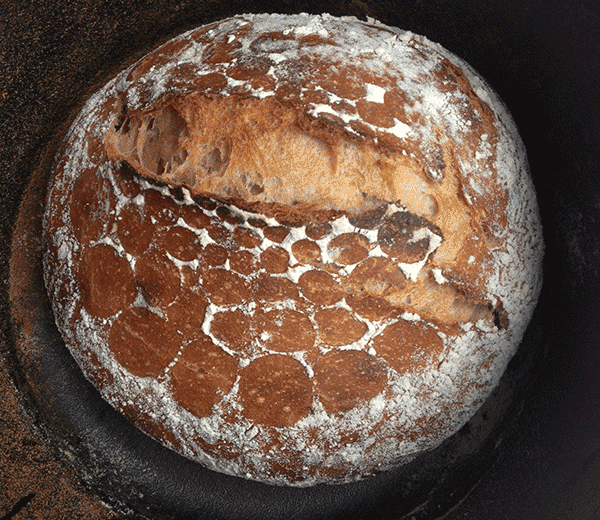
materials + processes | flour, water, salt, wild yeast.
Loaf
How does the non-artifact outcome of the design can look? Is it a system? Is that an object? Is that a new way to share knowledge? Perhaps an event? For me, it is a slow process, which is reminiscent of fermentation.
As a busy mom of 3, a wife, teacher and a grad student, I am always looking for ways to multi-task. Perhaps nothing summarizes this attempt better than feeding my family and friends nutritious bread while researching and developing my thesis project: 500+ loaves, all happily consumed.
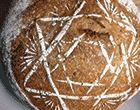

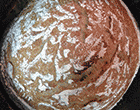
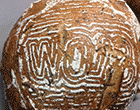
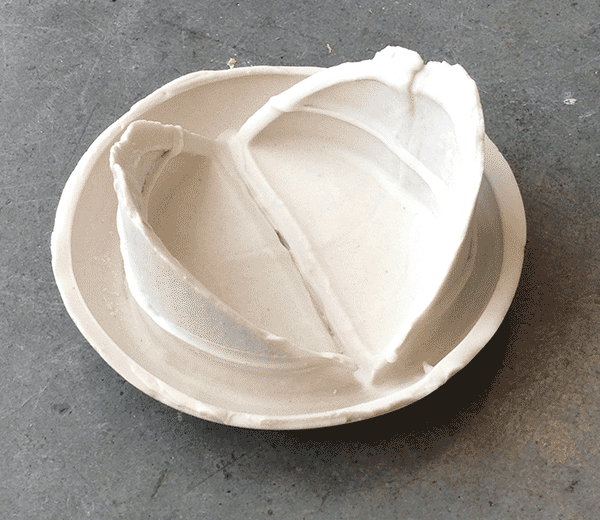
Vessels for sprouting of
Wheat Berries.
materials + processes | linen, cotton, spacer mesh
fabric, glass, porcelain,
Google Sketch-Up, CNC milling, slip casting
Seeds, Roots, and Shoots
Sprouted grains are called malted. They can be dried and milled into flours or added to bread as is. The best vessel for sprouting is a linen cloth bag and some sort of container to catch extra water. Grains are soaked in water for few hours and water is drained. They need to be rinsed one a day. Spacer mesh provides air circulation but tight enough so roots does not get caught and damaged in the fabric. Two layer material proved to work best.
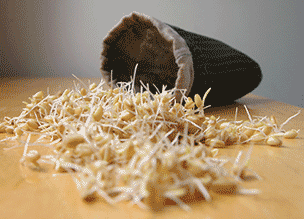
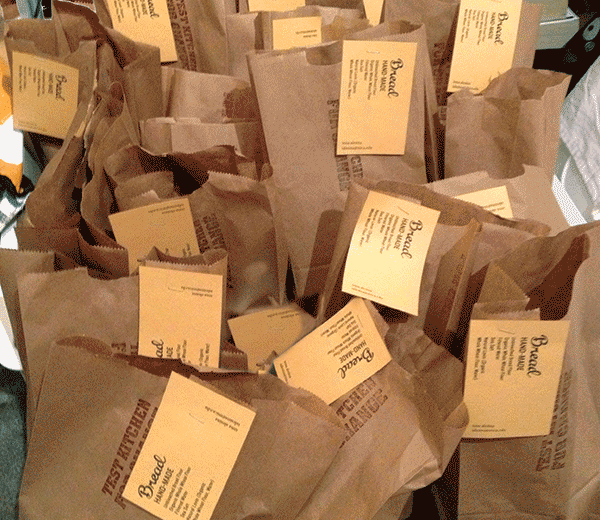
Participants picked up loaves and sourdough starter in the specially designed containers.
The brown paper bag works best to preserve the fresh bread's crunchy crust.
materials + processes | laser-cut stamp, craft paper bag
Bread Bag
Each bread-making event I did was different, evolving from the feedback and experience.
After the first bread event, participants picked up loaves baked at the Brown Memorial Park Avenue Presbyterian Church the next morning.
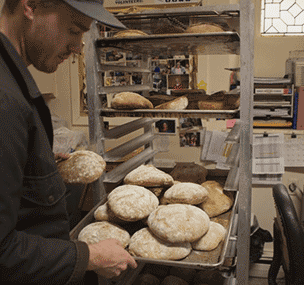
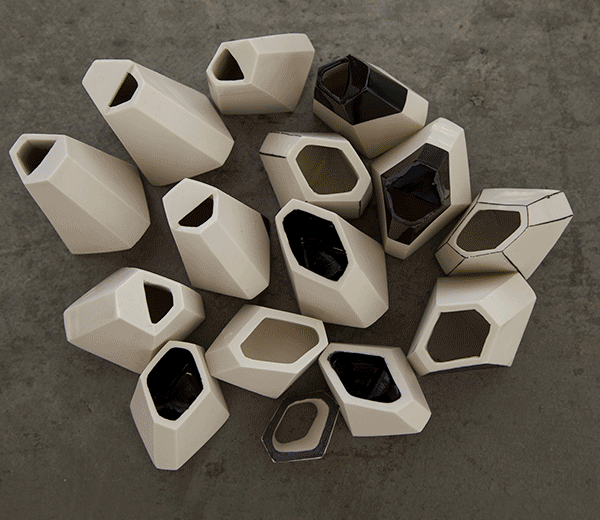
Salt and Spice Containers inspired by the shapes of salt crystals.
materials + processes | CNC milling, plaster mold, porcelain slip casting
Salt and Spice Containers
Different flour, water, and spices make different breads.Add your own spice.
Just 11 grams of salt are perfect to use in one loaf. When making your own bread you can choose to add more or less. Make it healthy and tasty for you; make it your own.
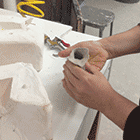
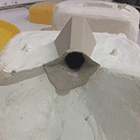
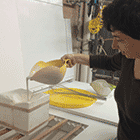
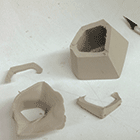
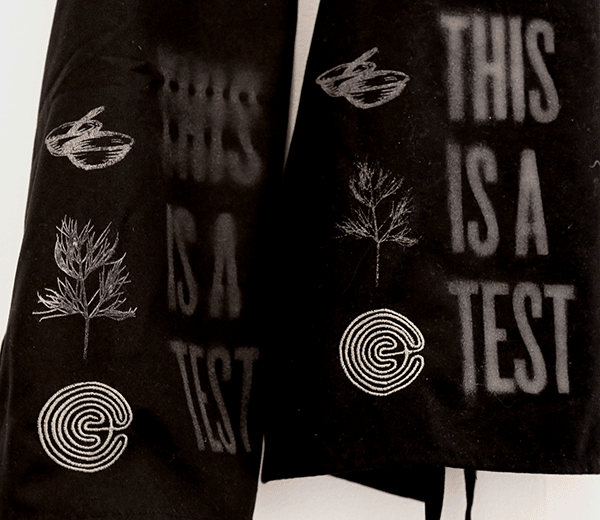
materials + processes | digital embroidery, stencil, silk screening
Adept Apron
Bread-making events in the community are the most important part of Test Kitchen for Change’s approach.
For each event, I designed a special emblem and applied it to the event aprons. Event participants wore the aprons not only to protect their clothes, but as a prop for role-playing in this new situation. Hopefully, as I continue teaching bread-making, our aprons will get covered by badges illustrating the history of the events.
The symbol of the first bread-making event is a maze, inspired by the meditative labyrinth located in the Brown Memorial Church’s sanctuary.
An outline of the dill herb symbolizes the Station North Co-operative Garden–the collaborating team of the second event.
Two mixing bowls represent the hands-on classes I conducted at MICA’s Meyerhoff Gallery during the thesis show.
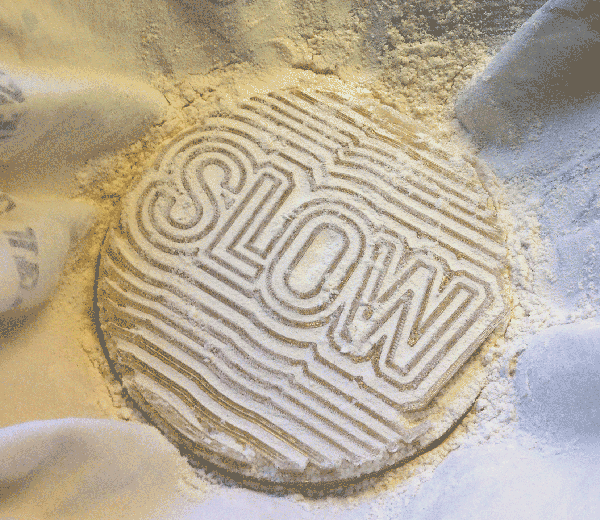
Containers for spices
and sourdough starter culture inspired by
the shape of budding
yeast cells.
materials + processes | wood, found objects,
terracotta, laser-cutter, CNC milling, 3D printing
Bread Stamps
Traditionally, loaves are proofed in baskets, leaving the signature mark of the banneton on the crust. Bakers can slash the loaves just before baking to make a special design.
Experimenting with the marks left by the proofing baskets, I tried an array of found and specially made objects to leave a mark on a proofed loaf. Shown on the next page are the results from a range of bread-printing tools. An old ashtray is an example of an obsolete object (in our family), which has found a new use in a new ritual.
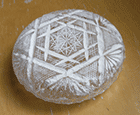

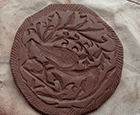
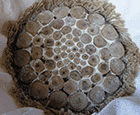
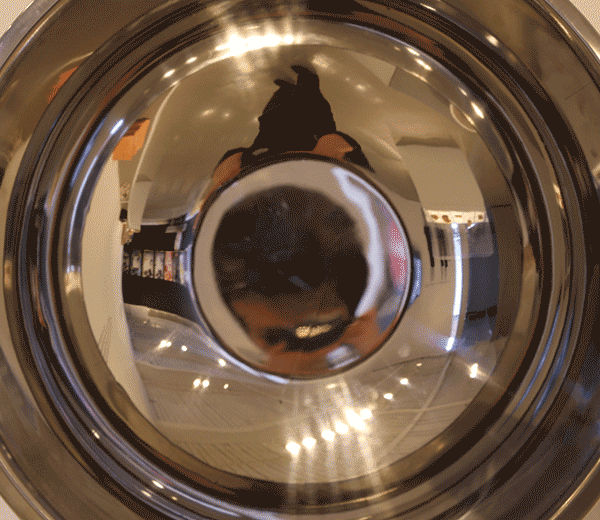
Communal Mixing Bowl ehibited in the gallery wall.
materials + processes | found object
Communal Mixing Bowl
My mixing bowl is a simple, round object designed to hold things. I love bowl-shaped things. They are comforting and womb-like.
My mixing bowl is a utilitarian object without any decorative markings or textures. She is light and virtually indestructible, yet small dents give her unique personality. She has been with my family for years, and no one knows where she was before and for how long. The letters “stain” are faint remnants of the word “stainless” on her bottom, and nice, subtle lines left by the steel-spinning tool are still visible on her sides. Her proportions are perfect: not fat, not tall, rounded on the bottom and with a smooth lip, which is great for holding her. Being a perfect container, she is also great when not in use; she can be washed in the dishwasher, scrubbed, or just left soaking. For storage, she neatly stacks insideother bowls and pots.
Moya Zheleznaya Miska–My Steel Salad Bowl— is how I describe her to my family. She has a high-pitched voice that would ring in my ears. Many times she fell from the kitchen cabinet and probably woke the entire neighborhood. Kids used her as a first musical instrument, along with other pots and metal leads. She is full of energy. She is most useful for mixing bread dough. Dough rises soft and elastic and sometimes escapes the bowl. I try to clean up the mess, and the bowl skitters the counter. I have long suspected that things in my kitchen had lives of their own, but now I am sure of it.
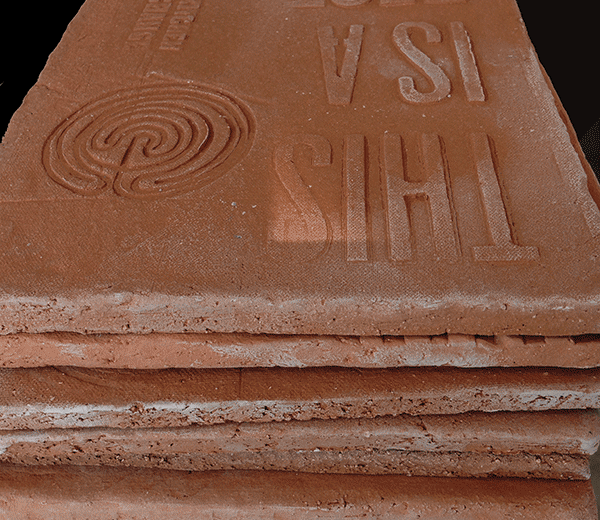
Bread stones were made for the Bread 3 events
and given away to the participants
of the bread-making classes at the end of the show.
materials + processes | terracotta,
fire sand (grog), laser-cut stencils
Baking Stones
The meditative labyrinth at the Brown Memorial Church, the sponsor of the first bread-making event, inspired the design motif of the stones.
Working with clay is a physical process, similar to bread-making. I used my feet and no power tools to mix the terracotta clay with firesand. Historically, people have used feet as tools to juice grapes and mix clay.
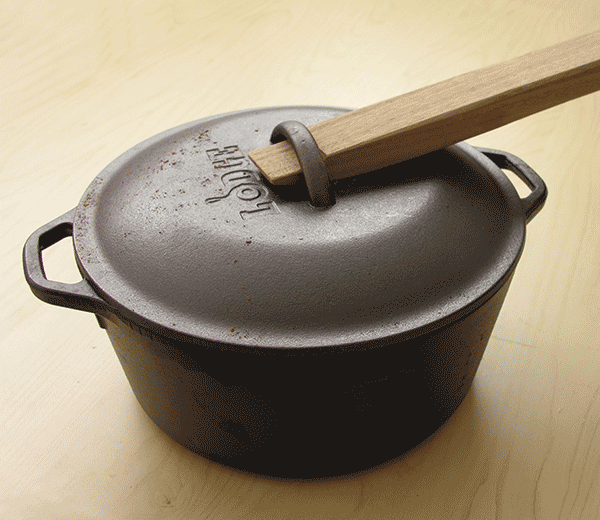
During the bread-baking it is hard and dangerous to maneuver heavy and hot cast iron lids.
A special notch, cut out in the wooden handle works like a lever and makes baking easier and safer.
materials + processes | Cast iron Dutch oven and hardwood handle.
Dutch oven with Custom Handle
Baking enthusiasts build cob ovens, rocket stoves, wood-burning hearths, etc.
If the hearth inspires and brings community together, it becomes a great catalyst. While sharing a kitchen during our bread-making events, we met cooking professionals and learned a great deal. However, we realized that oven is not a necessary component of our events. Most people have ovens at home. Using Dutch oven makes bread beautiful, pizza stone helps, but regular cookie sheet will work too.
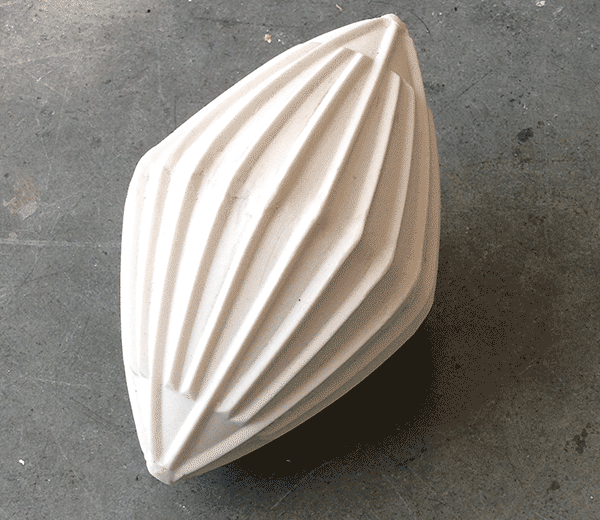
materials + processes | porcelain slip casting.
Double Juicer Tool
Making food hands-on is a sensual experience. When you touch the food you make a connection to it on a very different level. Juicer is a metaphor: "What does it feel like to be an orange?" One hand feels what the other makes.
There is no shortage of recipes and on-line tutorials, yet it took me some time and practice to make loaves that were not brick-hard (though they tasted great due to the slow fermentation). Eventually, I reached out to real experts, Atwaters Bakery, a well-known artisanal bread-maker in Baltimore. They let me work one bread-making shift in their commercial bakery. I shaped dozens of loaves by hand and watched experts gracefully make and bake loaves. By kneading the dough, I learned to understand how it should feel and behave. I understood that to engage people in the process of making bread, I needed to design my program to provide hands-on experience.